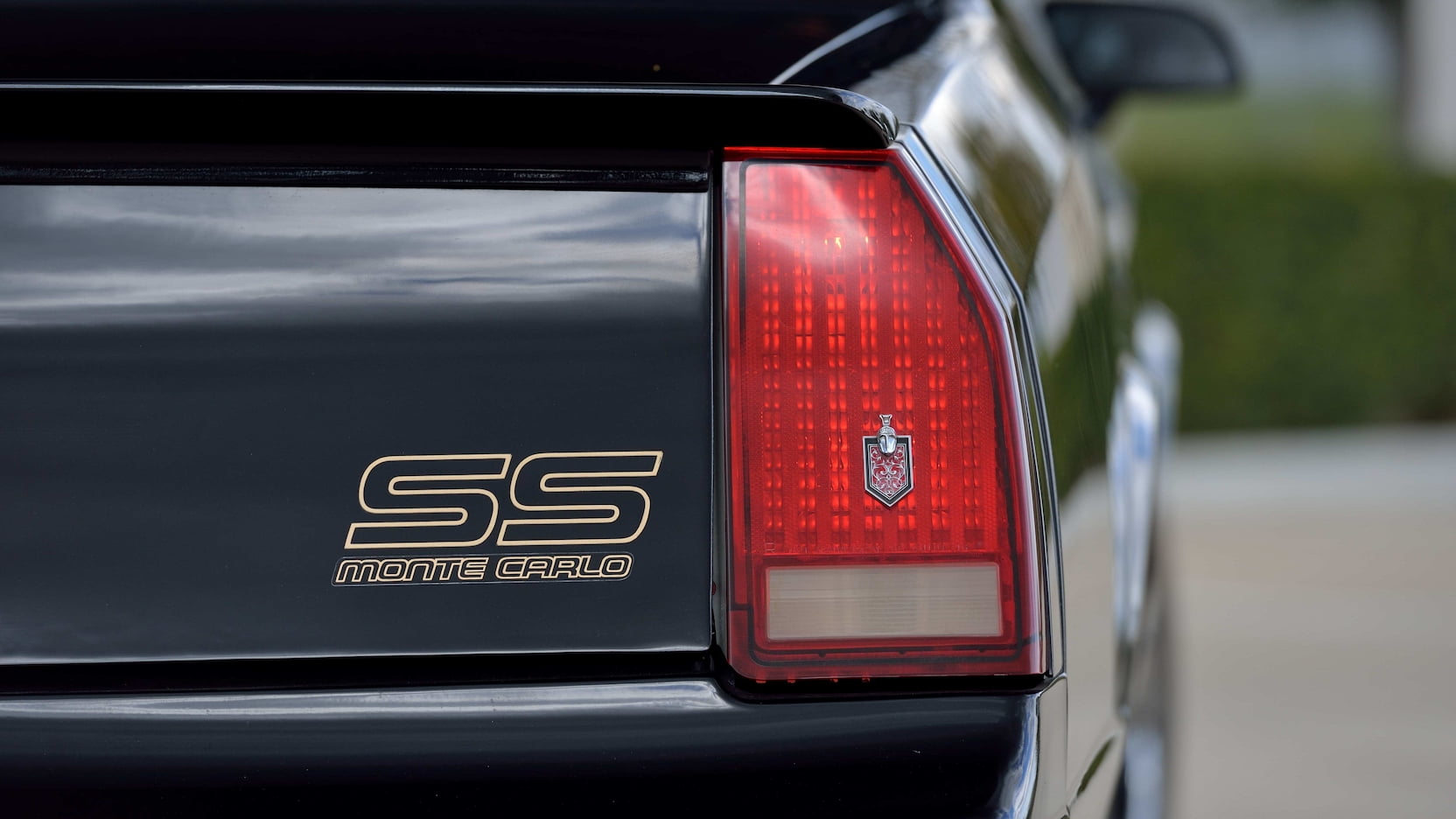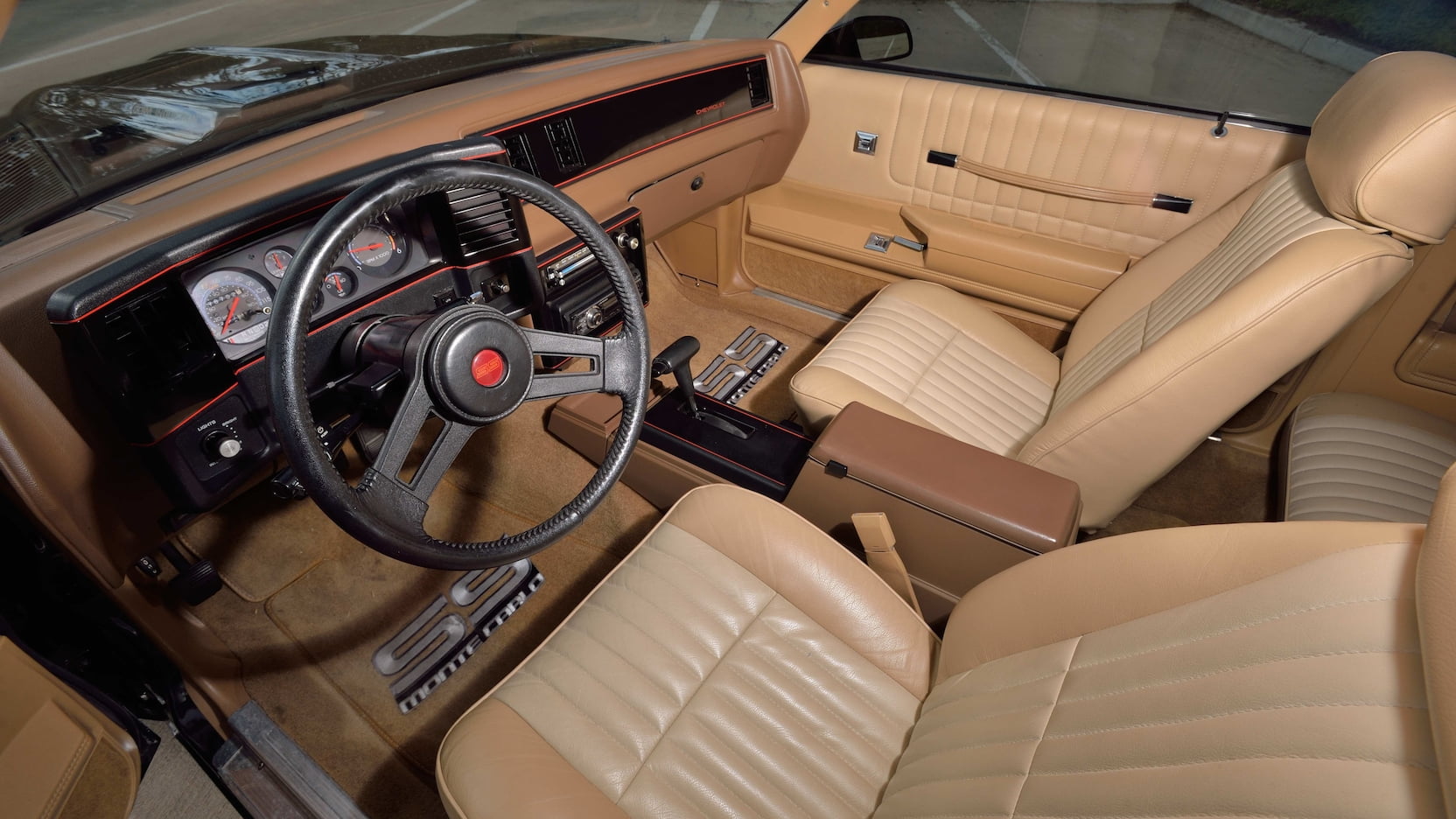Media | Articles
1978–88 Chevy Monte Carlos are mustache muscle that can be had on a budget
Movember has gotten pretty popular over the past few years, with millions of men all over the U.S. filling out their upper lip or full beard over four weeks before finally chopping it all off after Thanksgiving. Turn the clock back to the 1980s, however, and for a lot of guys every month was mustache month. And a lot of those guys probably drove Chevy Monte Carlos.
Despite the glitzy name, Monte Carlos have always been more at home in Mississippi than Monaco, but that ain’t a bad thing. GM’s mid-size G-body platform (Buick Regal, Chevy Monte Carlo and El Camino, Olds Cutlass, Pontiac Grand Prix, etc.) was very popular in the ’80s and produced roomy, fun—but not exactly fast—muscle cars. The Monte Carlo SS was one of the most popular, whether you had facial hair or not. And while they’re more expensive than they were just a few short years ago, SSs still offer a neat, fun, rear-drive package—on a budget.
The fourth-generation Monte Carlo debuted for 1981. But while there was a Monte Carlo Turbo model with a boosted Buick V-6 that year, and the Monte Carlo did make a go of it in NASCAR, a proper performance model was conspicuously absent from the lineup. That changed in 1983. The Monte Carlo got a mild facelift, and for the first time since 1971 there was an SS option in the range. Available in white or dark blue with a dark blue bench seat and column shift, the ’83 Monte SS also added F41 suspension, a 305-cubic-inch small-block with aluminum intake, and came with a three-speed automatic and an open diff. A small trunk spoiler, big decals, and Rally wheels, meanwhile, let people know you spent the extra dough for an SS.
In the 1983 cars, the 305 manages 175 horsepower and 225 lb-ft of torque, not exactly earth-shattering numbers but not bad at all for the early ’80s and enough to have fun with. The following year brought a 5-hp bump and an optional limited-slip, both welcome additions, but 1985 brought even bigger improvements. The engine was unchanged, but a much better TH200-4R four-speed automatic did the shifting and the 3.73 rear axle made for livelier driving than the old 3.42. Optional bucket seats and floor shift brought the extra sportiness inside, and optional T-tops allowed for some wind-in-your-mullet motoring. White, black, silver, and maroon were the paint choices.
New five-spoke alloy wheels came in 1986, and different graphics and rear bumper came in ’87, but the only other major change over the Monte Carlo SS’s 1983–88 run was the Aerocoupe. Built only for 1986 and ’87, it’s one of the funkiest and rarest cars of the mustache muscle era. Like the Dodge Charger Daytona, Plymouth Road Runner Superbird, and Ford Torino Talladega from a generation before, the Aerocoupe came out of the chase for every last mph on NASCAR’s high-speed ovals. While nowhere near as extreme as the Superbird, the Monte Carlo Aerocoupe is nevertheless a more slippery shape than the standard Monte Carlo SS with its unusual sloped rear glass and revised spoiler. Chevrolet sold just 200 Aerocoupes for 1986 (the exact number needed to homologate the body style for NASCAR racing), but 1987 is a different story. Plenty of people wanted to drive a Monte Carlo that looked like Dale Earnhardt’s and GM obliged, selling 6052 additional Aerocoupes to customers at a price of $16,325 (about $32,000 in 2019 dollars).
Marketplace
Buy and sell classics with confidence

For 1988, Chevrolet didn’t make major changes to the Monte Carlo SS, selling about 16,000 of them before the switch to the much less interesting Lumina. And as far as most enthusiasts are concerned, that was the end of the line for sporty Monte Carlos. Another SS did come out in 2000, but that was a different animal entirely, and not much of an animal at all. By that time the Monte Carlo was a fat, front-drive V-6, and Dale Earnhardt’s race car had even less in common with the Monte Carlo you could buy at the Chevy dealership.
Fourth-gen Monte Carlo SS models have never been very expensive, and 30 years on they’re still affordable classics. Chevrolet sold a lot of them. Over 24,000 sold in 1984, 35,000+ in 1985, and 41,000+ in 1986. Buick sold far fewer turbocharged Regals. But as the collector car hobby has grown and as big ’80s decals and Etch-a-Sketch styling comes back into fashion, a Monte SS isn’t the cheap thrill it used to be, even if it’s still squarely in entry-level category.
From the beginning of 2014 to the end of 2018, condition #2 (Excellent) values gradually rose by 72 percent, but they have been flat over the past 12 months. None are particularly pricey, but starting at the bottom of the ladder is the 1983 model, given its lower output and limited options. In #2 (excellent) condition, a 1983 Monte Carlo SS is worth $16,800. The 1984-88 cars are worth $17,500 in the same condition, while the Aerocoupe is king of the hill at $20,100, which isn’t outrageous given how rare these cars are. The 1985 and later cars with floor shift, bucket seats and cooler wheels are more sought after in general, and expect to pay a roughly 5 percent premium for T-tops. It’s far from the most car per dollar any way you look at it, but Monte Carlos are way cheaper than the rarer, quicker, cooler turbo Buicks and probably always will be. Most ‘80s Regal T-Types are worth well over 20 grand in #2 condition, while an ’86 Grand National is worth over 35 grand and an ’87 model over 40. Funny enough, both get more love than the equivalent Corvettes during the same time. Base model Vettes built from 1984–88 carry an average #2 (Excellent condition) value of just $13,900.

In addition to being relatively affordable to buy, Monte Carlos are also straightforward cars to own. There is lots of parts interchange with other GM cars, and—other than rust in a few key areas, leaky T-tops, and commonly found amateur mods—there aren’t any big gotchas. Hagerty vehicle data specialist Greg Ingold, former owner of an ’84 SS, still thinks highly of them:
“They are great cars that are underpowered, but given that everything was in that era, it’s not surprising. And the F41 suspension, limited-slip diff, and performance axle ratio you get with the SS makes it a much better car to drive than a normal Monte Carlo, which can feel a little sluggish.” In addition, if you shop at the big & tall store, here’s some good news: “Coming from someone who is 6-foot-5, they have plenty of room and are comfortable to drive,” Ingold says.
As for buyer interest, Gen-Xers remember these cars when they were new and make up a whopping 40 percent of insurance quotes for 1983–88 Monte Carlo SSs. Millennials may not actually remember the ’80s, but they listen to Queen, watch Stranger Things, and have a soft spot for Monte Carlos, and they make up 34 percent of quotes for the cars, compared to 21 percent of quotes across the rest of the market.
Don’t expect Monte Carlos to do anything crazy in the near future. They seem fully priced for now, and they’re another piece of mustache muscle that can still be had on a budget. That’s a good thing.


20191119151401)
20191119151407)









